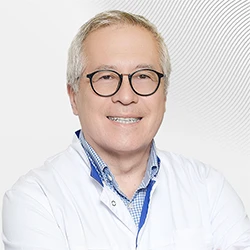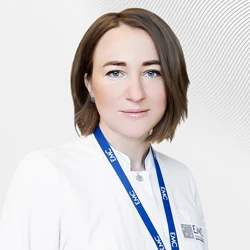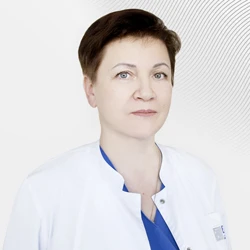Mechanical jaundice
Advantages of mechanical jaundice treatment in EMC





Causes of the disease
A sufficiently large number of benign and malignant diseases can cause the development of obstructive jaundice. It most often occurs when adult patients have a benign disease such as cholelithiasis. There is a large duodenal papilla in the duodenum. This organ with a funny name performs an important function: the main pancreatic and common bile ducts flow into it. They connect in this area, and any pathology in the large duodenal papilla can cause a violation of the outflow of both bile and pancreatic juice.
In chronic calculous cholecystitis, gallstones from the gallbladder can migrate into the common bile duct and make it difficult for bile to escape from the common bile duct into the duodenum through the large duodenal papilla. All this leads to the development of obstructive jaundice.
Another benign disease that often provokes mechanical jaundice is stenosis of the distal (peripheral) part of the choledochus (common bile duct) or the large duodenal papilla. Against the background of chronic inflammation or migrating small stones, the distal part of the common bile duct may narrow, which also leads to difficulty in the outflow of bile.
In addition, there are often sac formations (diverticula) in the area of the large duodenal papilla of the duodenum. If they become clogged with food, compression of the peripheral part of the common bile duct may occur, and this will provoke mechanical jaundice.
Benign diseases that often cause mechanical jaundice include adenoma of the bile duct, narrowing (stricture), and inflammation at different levels of the gallbladder (in the common bile duct, in the intrahepatic bile duct). Jaundice also often occurs due to the presence of a benign hereditary disease in the patient – primary sclerosing cholangitis.
Another common cause of obstructive jaundice is chronic pancreatitis.
All of the above diseases require treatment. The disease causes intoxication, disruption of the activity of all organs, including the brain: this is a serious complication of both benign and malignant diseases
.
If we talk about malignant diseases that provoke mechanical jaundice, then most often it is a tumor of the head of the pancreas, a tumor of the large duodenal papilla and cyst cholangiocarcinoma (a tumor of the peripheral part of the common bile duct, which is located in the head of the pancreas), a tumor of the common hepatic duct (Klatskin's tumor), a tumor of the intrahepatic ducts (intrahepatic cholangiocarcinoma). An important fact: the tumor can be located on any part of the bile duct, often their first symptom is mechanical jaundice and itching caused by the accumulation of bile acids in the skin.
Tumors of the common hepatic duct (Klatzkin's tumor or portal cholangiocarcinoma) are common in elderly patients (over 60 years of age): the diseases also lead to mechanical jaundice and cause itching of the skin.
Secondary tumors often metastasize to the liver: they can form at different levels of the bile ducts and disrupt the outflow of bile, which further provokes the appearance of jaundice. In addition, an increase in lymph nodes (lymphadenitis, metastases, lymphoma) located next to the bile duct can cause external pressure, which is also accompanied by the appearance of jaundice.
Symptoms of obstructive jaundice
The main symptom is yellowness of the skin and sclera. The second symptom is an increase in the level of bilirubin in the blood. Bilirubin can be common and related. Also, in a patient with obstructive jaundice, the urine darkens and the stool turns white. An even earlier symptom of the disease is itching of the skin, which may appear even before the disease itself.
Diagnostics
Mechanical jaundice can be diagnosed using ultrasound. In the process, dilated bile ducts are detected, the block level is visualized, and the condition of the liver and other organs of the abdominal cavity and retroperitoneal space is assessed. It is important to take tests for bilirubin and its fractions, ALT and AST enzymes, ALP, GGTP. First of all, when skin itching occurs, doctors recommend going to a surgeon for an examination and performing an ultrasound examination of the abdominal cavity in order to exclude or confirm the mechanical nature of jaundice. Magnetic resonance imaging and magnetic resonance cholangiography and/or computed tomography with intravenous contrast are also very informative studies.
Benign jaundice is often accompanied by acute pain and fever: This is the main difference from malignant tumors, which do not have characteristic signs and often manifest only as pain-free jaundice. In this case, the doctor notices a symptom such as an enlargement of the gallbladder by palpation.
Treatment of obstructive jaundice
A large number of minimally invasive endoscopic and percutaneous techniques are used as treatment. In the hospital, the patient receives infusion and drug therapy aimed at improving metabolism, preventing the development of liver and kidney failure and inflammatory complications in parallel with eliminating the cause of obstructive jaundice.
If the patient has stones in the bile duct, then the most appropriate way to treat mechanical jaundice in this case is endoscopic surgery, which allows the removal of stones through a large duodenal papilla using a video endoscope and special loops and, if necessary, a lithotriptor for crushing large stones. If the patient is diagnosed with a tumor, the following options for preliminary or final discharge of the biliary tract may be used:
- Endoscopic stenting (insertion of a tube into the bile duct bypassing the tumor), depending on the level of the tumor location, preliminary nasobiliary drainage and subsequent stenting with several stents may be required
- Antegrade percutaneous drainage and bile duct stenting
In cases where the patient cannot undergo endoscopic or antegrade surgery, open surgery is performed. Whichever treatment method is used, an individual and comprehensive approach to each patient is important: jaundice often develops against the background of severe concomitant diseases, therefore, the continuous participation of cardiologists, hepatologists, internists and other specialists is important in the treatment process.
Treatment of obstructive jaundice
A large number of minimally invasive endoscopic and percutaneous techniques are used as treatment. In the hospital, the patient receives infusion and drug therapy aimed at improving metabolism, preventing the development of liver and kidney failure and inflammatory complications in parallel with eliminating the cause of obstructive jaundice.
If the patient has stones in the bile duct, then the most appropriate way to treat mechanical jaundice in this case is endoscopic surgery, which allows the removal of stones through a large duodenal papilla using a video endoscope and special loops and, if necessary, a lithotriptor for crushing large stones. If the patient is diagnosed with a tumor, the following options for preliminary or final discharge of the biliary tract may be used:
- Endoscopic stenting (insertion of a tube into the bile duct bypassing the tumor), depending on the level of tumor location, preliminary nasobiliary drainage and subsequent stenting with several stents may be required
- Antegrade percutaneous drainage and bile duct stenting
In cases where the patient cannot undergo endoscopic or antegrade surgery, open surgery is performed. Whichever treatment method is used, an individual and comprehensive approach to each patient is important: jaundice often develops against the background of severe concomitant diseases, therefore, the continuous participation of cardiologists, hepatologists, internists and other specialists is important in the treatment process.
Endoscopic methods of treatment of obstructive jaundice
At the first stage of treatment, surgeons use minimally invasive surgical methods, namely endoscopic to remove stones from the bile ducts. During the operation, the dissection of the large duodenal papilla is performed. This operation is called an endoscopic papillosphincterotomy. After that, access is opened to remove stones using special tools. If necessary, the process of removing stones can be divided into stages. Modern technologies allow crushing large-diameter stones using laser and electrohydraulic lithography. This is the most common method of treating obstructive jaundice.
After surgery and normalization of bilirubin levels, it is necessary to eliminate the cause of obstructive jaundice. If a benign adenoma of the large duodenal papilla is confirmed in the patient, it can also be removed endoscopically, laparoscopic cholecystectomy is indicated in the presence of gallstones.
Some patients have narrowing of the common bile duct due to inflammation or after previous operations on the gallbladder and bile ducts. In this case, they develop benign strictures (narrowing) of the bile ducts. They can be successfully treated with the endoscopic method. At the same time, plastic stents (from one to three) are installed for the area of narrowing (stricture) of the bile ducts, which are changed every three months, and balloon dilation is performed, i.e., the ducts expand. All this leads to the restoration of the lumen of the bile ducts and recovery.
Antegrade operations
If the operation cannot be performed endoscopically, surgeons gain access to the bile ducts from above through the liver. The treatment is performed under general anesthesia under the control of ultrasound and X-ray equipment: the surgeon performs a puncture of the bile duct, a contrast agent is injected into it. Thanks to this, doctors can determine the exact cause and level of obstructive jaundice. A tube (hepaticostomy) is inserted into the bile ducts during this operation. Elimination of the cause of the disease (benign diseases or malignant tumors) is performed after normalization of bilirubin levels, thorough examination and compensation of concomitant diseases .
Operations after resolution of jaundice
Laparoscopic cholecystectomy is performed for gallstones. In benign strictures of the bile ducts, treatment using temporary stenting is effective.
Choledoch cysts, benign tumors of the bile duct, adenomas of the bile duct, Mirizzi syndrome (fistula, large stone at the level of the common hepatic duct) require open surgical treatment.
In case of malignant tumors, the surgery option depends on the location and stage.
Possible complications and prognosis of life
Complications after treatment are rare (in only 5%). The prognosis of recovery after treatment of obstructive jaundice in EMC is good. Patients manage to maintain their quality of life at a high level after surgical interventions. Highly qualified EMC surgeons also often use low-traumatic surgery methods, which significantly reduces the risk of complications and improves the prognosis. At the same time, it is important to understand that the prognosis depends on the patient's age, the presence or absence of concomitant diseases and other individual characteristics that require the joint work of specialists of various profiles.
Rehabilitation
In EMC, due to the performance of low-traumatic endoscopic operations on the bile ducts, rehabilitation takes place very quickly and begins the day after the operation, and discharge from the hospital is possible three days later. Even with severe mechanical jaundice with concomitant diseases, patients can usually get up and walk the next day under the supervision of doctors. Rehabilitation in this situation can take from one to two weeks.
Prevention of obstructive jaundice
It is important to identify the predisposing causes in a timely manner and immediately begin to eliminate them. If a patient has a disease that potentially causes or is complicated by mechanical jaundice (for example, chronic calculous cholecystitis), it is important for him to have a cholecystectomy, a surgical treatment that involves the removal of the gallbladder. If bile duct cysts are detected, their radical removal is necessary, which will prevent the further development of a malignant tumor.
A healthy lifestyle is also important for the prevention of obstructive jaundice. Chronic pancreatitis develops against the background of acute pancreatitis, which in men is mainly associated with excessive and regular consumption of alcohol and fatty foods.
Why the EMC
The first and only clinic in Russia, created in the image of the world's leading clinics
EMC is a multidisciplinary center offering patients a high level of medical services and a personalized approach
Worldwide recognition and awards
 Learn more
Learn more
Worldwide recognition and awards
 Certificates and licenses
Certificates and licenses
Make an appointment for a consultation
Specify your contacts and we will contact you to clarify the details
Reviews
and new products of the EMC

.webp)

.webp)

